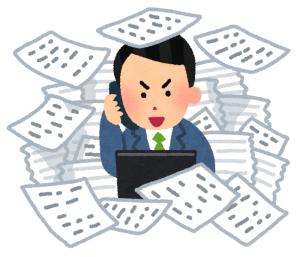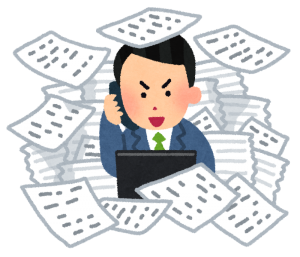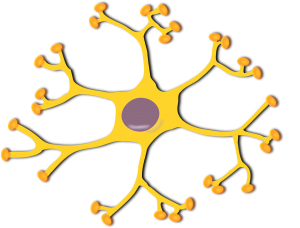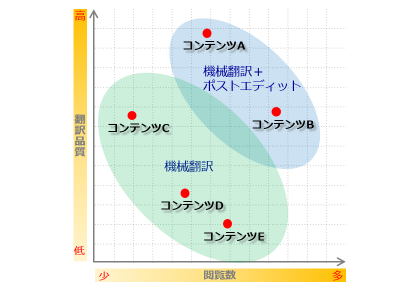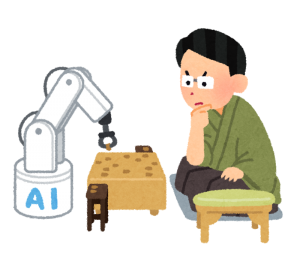When it comes to machine translation, the focus is often on effects such as cost reduction and lead time reduction.
However, recently, there has been an increase in companies that are working on the implementation of machine translation as one of the initiatives for "work style reform" and "productivity improvement".
For example, a manufacturing company has been able to improve productivity by about 20% by introducing machine translation for the Japanese-English translations that were previously handled by in-house translators.
By implementing machine translation,productivity has increased by approximately 20%.
In addition, using the introduction of machine translation as a trigger,
not only improves productivity,
・Improvement of the quality of original documents
・Standardization and optimization of quality
・Accumulation and effective use of translation assets
there are also cases where effects from the perspective of business improvement have been realized.
Today, we will introduce the effects of business improvement through the introduction of these machine translation systems.
●The Effects of Implementing Machine Translation Beyond Just Productivity Improvement
Improvement of Original Document Quality
Many companies seem to be facing challenges with the quality of Japanese and English documents created in-house.
However, even when trying to improve the quality of documents such as manuals,
the benefits of improving document quality are often not understood within the company,
resulting in a lack of cooperation from writers or the approval of the necessary resources for improvement,
which often leads to a lack of progress in these efforts.
Simply put, when it comes to efforts to improve the quality of the original text,
voices often arise such as,
"Is it really necessary to spend that much time and money?"
and "Since there are no complaints from users, is there really a need for improvement?".
However, when introducing machine translation, by improving the text to a style that is suitable for machine translation
the quality of machine translation can be improved,
which can be quantified as a productivity increase.
This allows you to visibly recognize the need for improving the quality of the original text.
As a result, it becomes easier to obtain internal cooperation and approval for costs related to improving the original text.
In a certain company, the introduction of machine translation has led to the establishment of guidelines for creating original texts within the organization,
and efforts are being made to improve and standardize the quality of manual writing.
The introduction of machine translation also contributes to the standardization and optimization of translation quality.
In many companies, the translation quality varies depending on the person in charge,
and there are still many cases where the target translation quality has not been established.
As a result, the quality of the translation may not be suitable for the intended use of the content or the target users
and may result in poor quality or excessive quality.
In such cases, the introduction of machine translation can serve as an opportunity to
reassess within the company what level of translation quality is optimal.
In order to implement machine translation, what level of quality should be targeted for post-editing?
By setting target quality and determining the aspects to consider for post-editing,
we can create guidelines that make the quality, which is currently personalized, visible,and it is possible to standardize and optimize.
Many companies that have implemented machine translation set target quality for each content and language,
and by standardizing the guidelines for post-editing perspectives and operating machine translation,
they achieve standardization and optimization of quality.
The introduction of machine translation can serve as a catalyst for sharing and accumulating translation assets such as past translation memories within the company,
and effectively utilizing them.
Translation memories and glossaries are managed by individual translators and departments,
and I often hear concerns that valuable translation assets are not being shared within the company.
To improve the quality of machine translation, as you all know,
it is important to manage and effectively utilize past translation assets such as translation memories and glossaries.
As a result, many companies are also working on the organization and management of translation memories and glossaries that have not been managed until now, triggered by the introduction of machine translation.
Translation memories and glossaries are not individual assets, but rather assets of the entire company
A system that allows for accumulation is being realized through the introduction of machine translation.
●Summary
Today, we introduced the effects of implementing machine translation, which are not only about "cost and lead time reduction" and "improving productivity."
Everyonecan consider the implementation of machine translation as one opportunity to improve in-house translation operations,
why not take advantage of it?
On May 31 (Wednesday), we plan to hold a free open seminar on the theme of "Support Seminar for Implementing Machine Translation for Work Style Reform".
For details about the seminar, please see here.
We plan to introduce case studies of business improvements through the implementation of machine translation by various companies, so if you are interested, please join us!
If the form is not available, please send your inquiry via email to hsweb_inquiry@science.co.jp.
Thank you.
Alternatively, please feel free to contact us by phone at TEL: 03-5321-3111.

